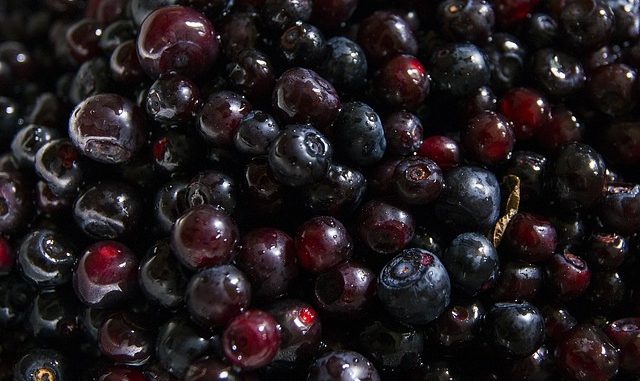
Huckleberries are great sources of food colour. The juice from the berries has an intense purple hue which makes it suitable as a natural colour for beverage processing. The colour hues are good enough to replace Allura Red in beverages.
Some species use the same common name of huckleberry. That name is derived from old English names including hurtleberry or whortleberry.
In North America, the huckleberries are actually from the Ericaceae family and belong to two related genera – Vaccinium and Gaylussacia. Vaccinium are usually associated with blueberries. The main species here are the red huckleberry (Vaccinium parvifolium), the black huckleberry or thin-leaved huckleberry (V. membranaceum) and the blue or Cascade huckleberry (V. deliciosum). Another is V. ovatum. They all grow in various habitats especially in acidic soils as Vaccinium species tend to do. Most of them are found in the Pacific Northwest of the USA and into southern parts of Canada.
V. membranaceum is quite robust having survived the cataclysmic events of the Mount St. Helens eruption.
One of the species bearing the huckleberry name is from the Solanaceae family and is called scientifically Solanum scabrum. It’s common name is ‘Garden Huckleberry’.
Anthocyanin Pigments In Huckleberries
The anthocyanins of V. membranaceum and V. ovatum have been analysed. each species contains 15 anthocyanins which are the galactoside, glucoside, and arabinoside of delphinidin, cyanidin, petunidin, peonidin, and malvidin (Lee et al., 2004).
The well known pH differential method has also been tried on buffered solutions of huckleberry anthocyanins at pH 1.0 and 4.5 (Lee et al., 2005).
A fruit extract for beverages is currently marketed by Christian Hansen for the express purpose of replacing Allura Red. It has roughly 40 per cent better stability than equivalent anthocyanin preparations of a similar content.
References
Lee, J., Durst, R. W., & Wrolstad, R. E. (2005). Determination of total monomeric anthocyanin pigment content of fruit juices, beverages, natural colorants, and wines by the pH differential method: collaborative study. Journal of AOAC international, 88(5), pp. 1269-1278.
Lee, J., Finn, C. E., & Wrolstad, R. E. (2004). Comparison of anthocyanin pigment and other phenolic compounds of Vaccinium membranaceum and Vaccinium ovatum native to the Pacific Northwest of North America. Journal of Agricultural and Food Chemistry, 52(23), pp. 7039-7044. (Article)
Leave a Reply